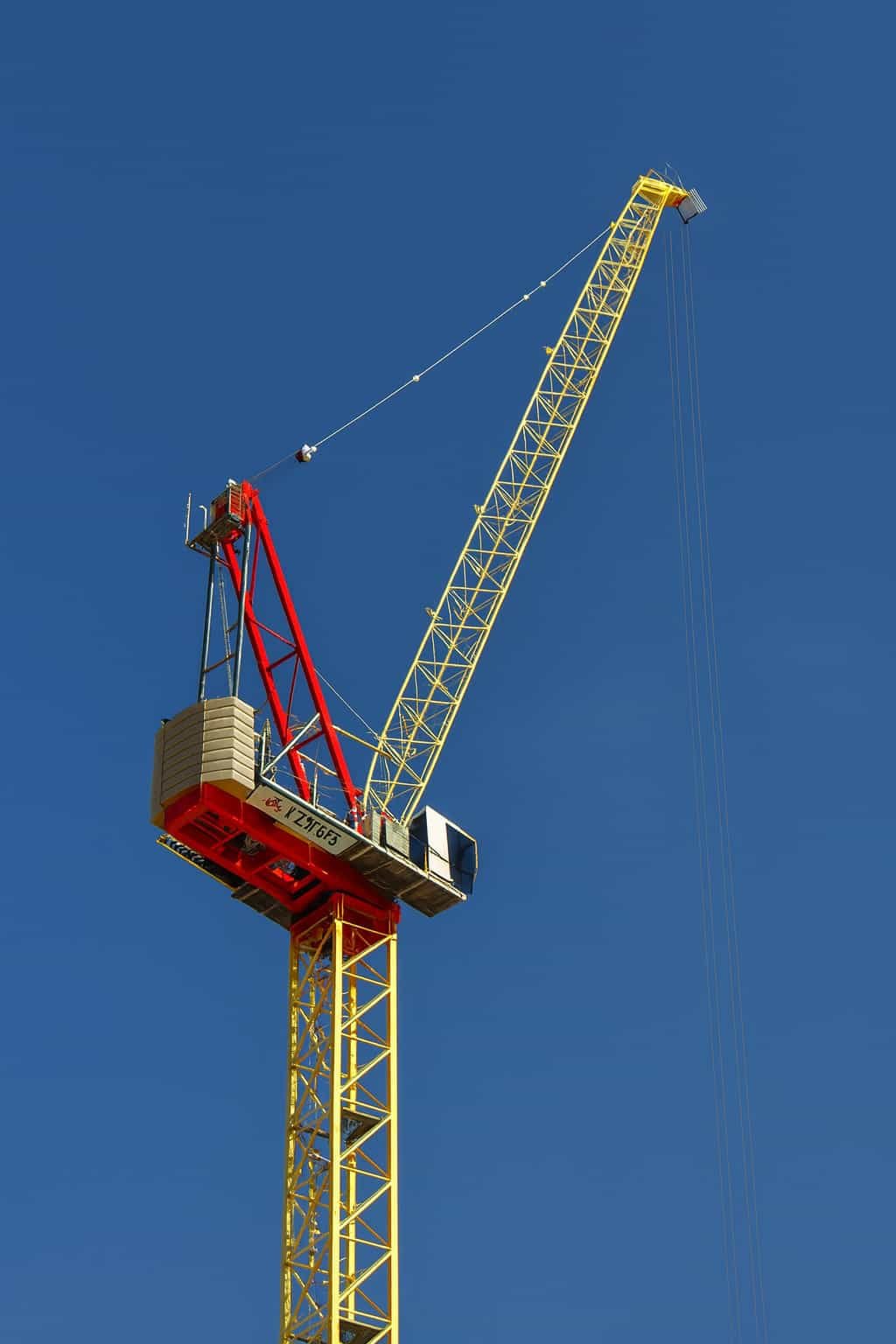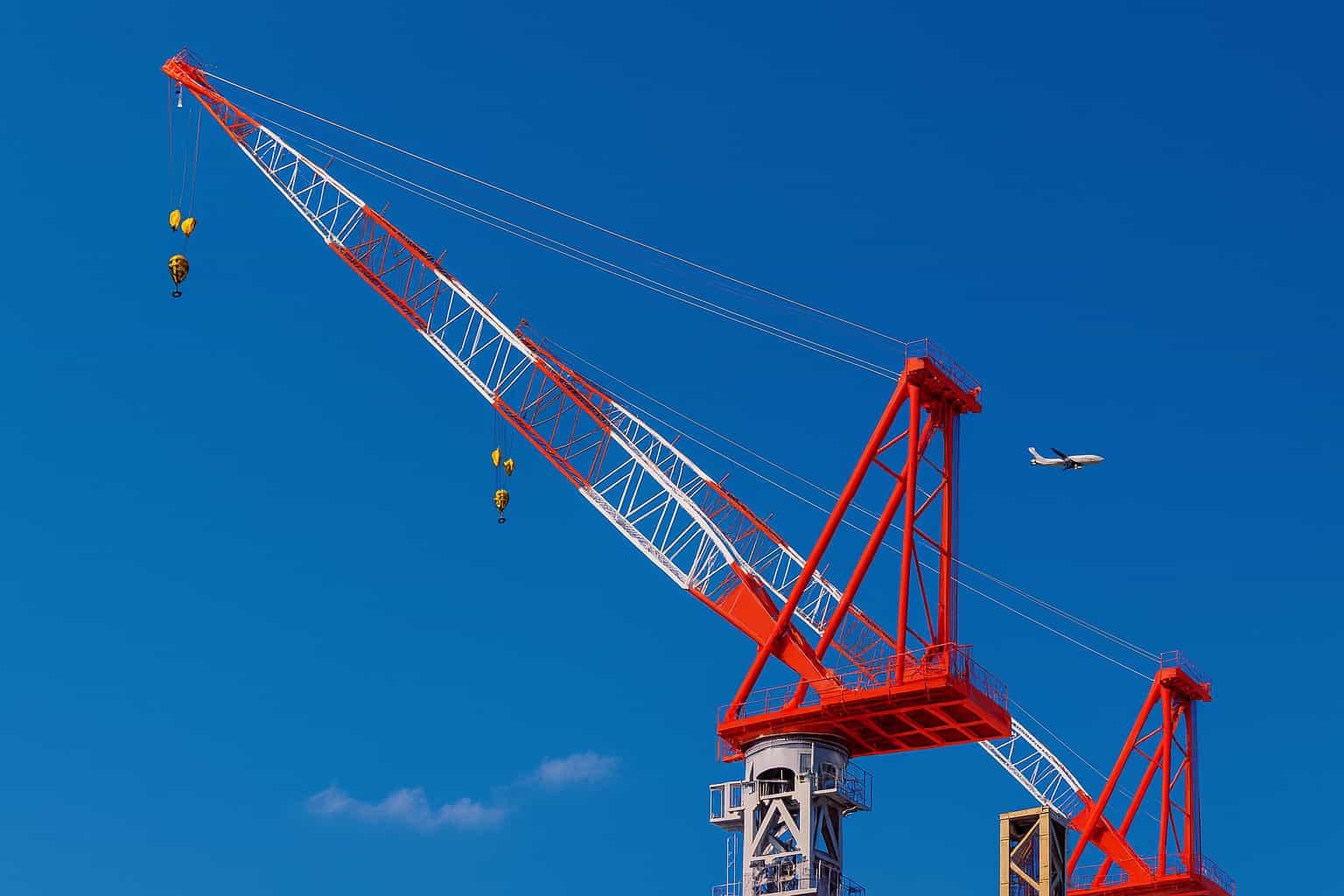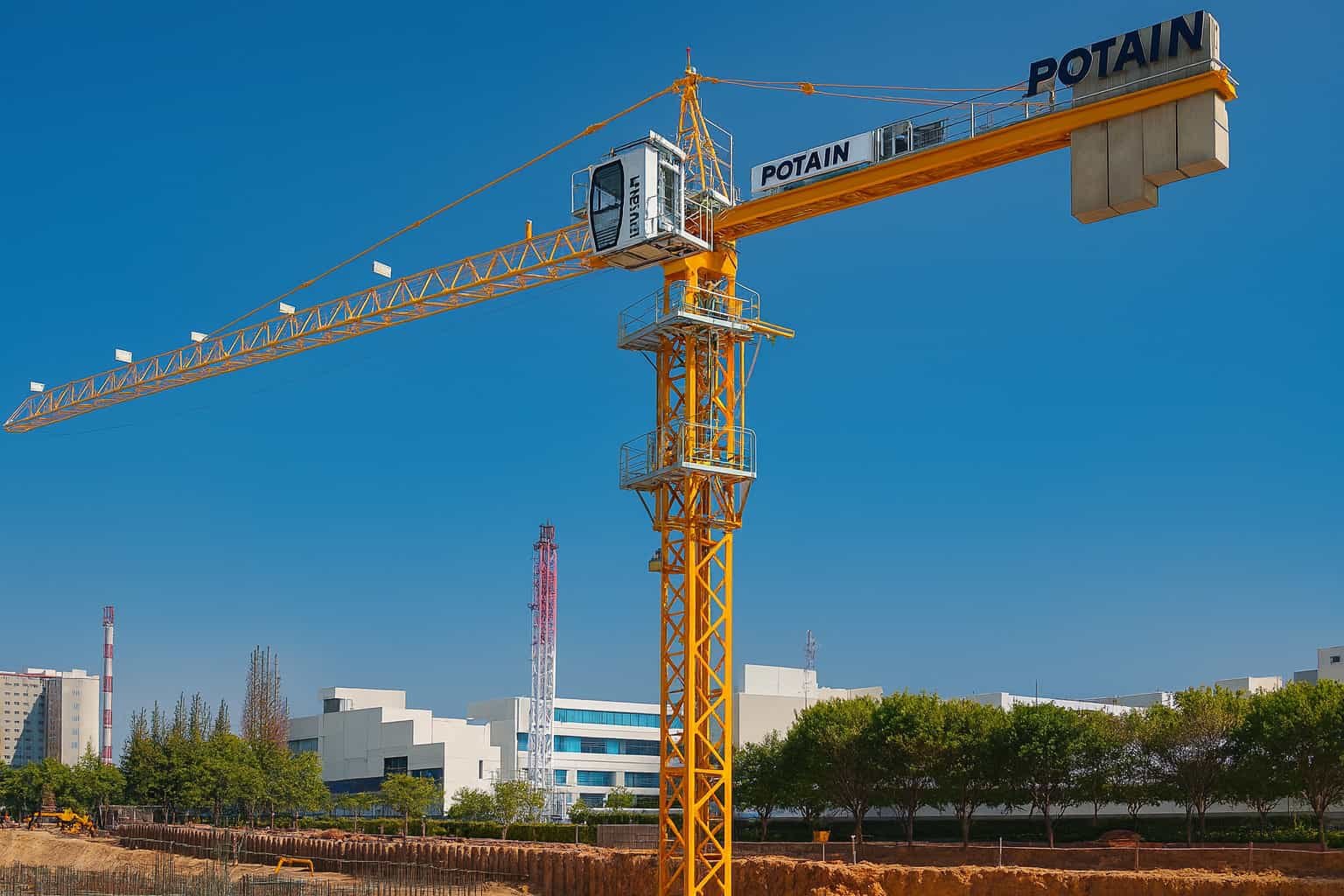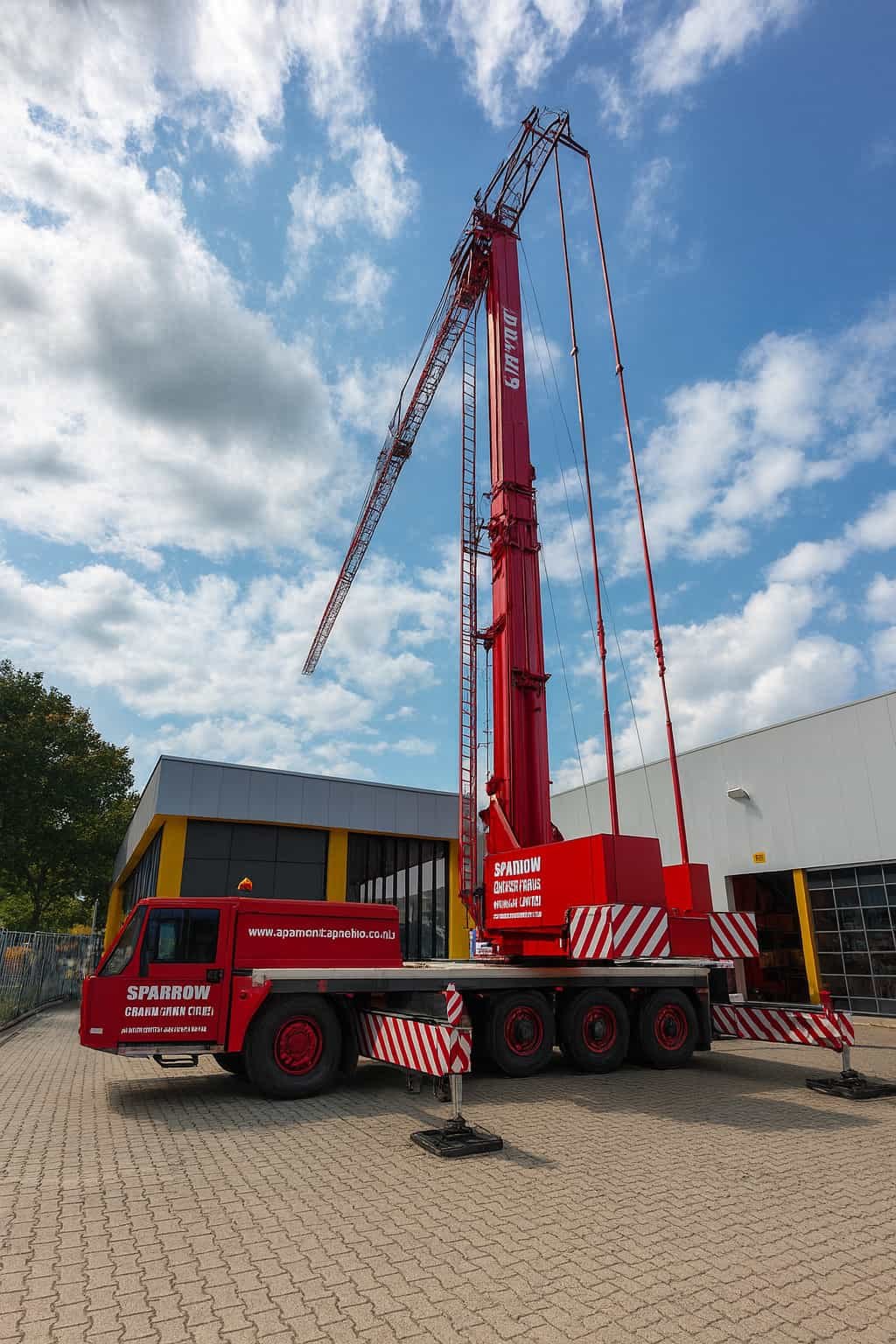What is a Tower Crane?
A tower crane is a fixed crane used primarily in the construction of tall buildings and structures. It is designed to lift heavy materials to significant heights with precision and stability.
Key Components of a Tower Crane:
- Base: Anchored to the ground to provide stability.
- Mast (or Tower): Vertical section that gives height.
- Slewing Unit: Allows the crane to rotate.
- Jib: Horizontal arm used to lift and move loads.
- Counterweights: Balance the crane to prevent tipping.
- Operator’s Cab: The control center for the crane operator.
How It Works:
- Assembly: Begins with the base, followed by the mast sections.
- Operation: The slewing unit rotates the jib to position loads.
- Lifting: The hook and lifting mechanism move materials vertically and horizontally.
Tower cranes are essential for modern construction, enabling efficient and safe lifting of heavy materials to great heights.
Where is a tower crane used?
Tower cranes are primarily used on construction sites for lifting and moving heavy materials such as steel, concrete, and large tools. They are essential for building tall structures like skyscrapers, bridges, and large-scale commercial buildings.

Key Applications of Tower Cranes
- Skyscraper Construction: Facilitates the vertical transportation of heavy materials.
- Bridge Building: Helps in positioning large structural components.
- Industrial Projects: Assists in assembling massive machinery and equipment.
- Wind Turbine Installation: Enables the erection of tall turbine towers.
- Maritime Operations: Used in shipyards for moving heavy ship parts.
How Tower Cranes Operate
- Base Installation: Fixed to a concrete foundation for stability.
- Mast Assembly: Vertical tower sections are added to reach the desired height.
- Jib and Counterweight: Horizontal jib is installed for load lifting, balanced by a counterweight.
- Hoisting Mechanism: A winch system raises and lowers loads along the jib.
Tower cranes are indispensable in modern construction due to their height and lifting capabilities.
What is the difference between a crane and a tower crane?
A crane is a general term for machines used to lift and move heavy loads, while a tower crane is a specific type of crane designed for high-rise construction with a fixed vertical mast.

Key Differences:
- Structure:
- Crane: Mobile or static, varying designs (e.g., truck-mounted, telescopic).
- Tower Crane: Tall, fixed mast with a horizontal jib.
- Usage:
- Crane: General lifting, construction, manufacturing, and transport.
- Tower Crane: Skyscraper and tall building construction.
- Mobility:
- Crane: Can be mobile (e.g., truck crane).
- Tower Crane: Fixed in one location during construction.
- Height and Reach:
- Crane: Limited height and reach.
- Tower Crane: Designed for significant height and reach, extending hundreds of feet.
By understanding these differences, one can choose the appropriate crane for specific construction needs.
What are the disadvantages of a tower crane?
Tower cranes, while essential for high-rise construction, have several disadvantages including high initial costs, complex setup, and potential safety risks.

High Initial Costs
- Tower cranes require significant financial investment for purchase, transportation, and installation.
Complex Setup
- Installation and dismantling are time-consuming and require skilled labor and specialized equipment.
Safety Risks
- High winds and mechanical failures can lead to accidents.
- Requires regular maintenance to ensure safety standards are met.
Limited Mobility
- Once installed, tower cranes are stationary and cannot be easily moved around the site.
Space Constraints
- Requires substantial ground space for setup and operation, which may not be feasible in congested urban areas.
Understanding these disadvantages can help in better planning and risk management for construction projects.
How many types of tower cranes are there?
There are primarily three main types of tower cranes: Hammerhead, Luffing Jib, and Flat Top. Each type serves specific construction needs and site conditions.

Hammerhead Tower Cranes
- Structure: Fixed horizontal jib
- Usage: Common in urban construction
- Advantage: Large lifting capacity and wide working radius
Luffing Jib Tower Cranes
- Structure: Angled, adjustable jib
- Usage: Constrained spaces, high-rise buildings
- Advantage: Reduced slewing radius, flexibility in tight spaces
Flat Top Tower Cranes
- Structure: No top tie-bars, flat top
- Usage: Sites with multiple cranes
- Advantage: Easy assembly/disassembly, ideal for complex projects
Understanding these types can help in selecting the appropriate crane for specific construction scenarios, ensuring efficiency and safety.
Are Tower Cranes Electric or Hydraulic?
Tower cranes can be either electric or hydraulic, each type offering distinct advantages depending on the construction project’s requirements. Most modern tower cranes are electric due to their efficiency and environmental benefits.

Electric Tower Cranes
- Power Source: Use electricity, usually from the grid or generators.
- Advantages:
- Lower operational costs.
- Reduced emissions, making them eco-friendly.
- Consistent and reliable power supply.
Hydraulic Tower Cranes
- Power Source: Use hydraulic systems powered by diesel engines.
- Advantages:
- Higher lifting capacity.
- Greater precision in movement.
- More suitable for heavy-duty tasks.
Conclusion
The choice between electric and hydraulic tower cranes depends on factors such as project size, environmental concerns, and lifting requirements. Electric cranes are more common for their efficiency, while hydraulic cranes are preferred for heavy lifting tasks.
How do Tower Cranes Work?
Tower cranes operate by using a combination of a central mast, a rotating jib, and counterweights to lift and move heavy loads. They are essential in constructing tall buildings due to their height and lifting capacity.
Key Components and Functions:
- Mast: The tall vertical structure providing height.
- Jib: The horizontal arm that rotates to carry loads.
- Counterweights: Balance the crane and prevent tipping.
- Slewing Unit: Allows the jib to rotate around the mast.
- Hoist: The mechanism that lifts and lowers loads.
Operational Process:
- Assembly: Cranes are assembled on-site, with sections of the mast added incrementally.
- Lifting: The hoist motor raises and lowers the load, guided by the jib.
- Rotation: The slewing unit allows the jib to move the load horizontally.
- Balancing: Counterweights ensure stability during operations.
Safety Mechanisms:
- Load Limit Sensors: Prevent overloading.
- Weather Monitoring: Avoids operations during hazardous conditions.
Tower cranes are pivotal in urban construction, enabling the efficient and safe assembly of skyscrapers and other large structures.

